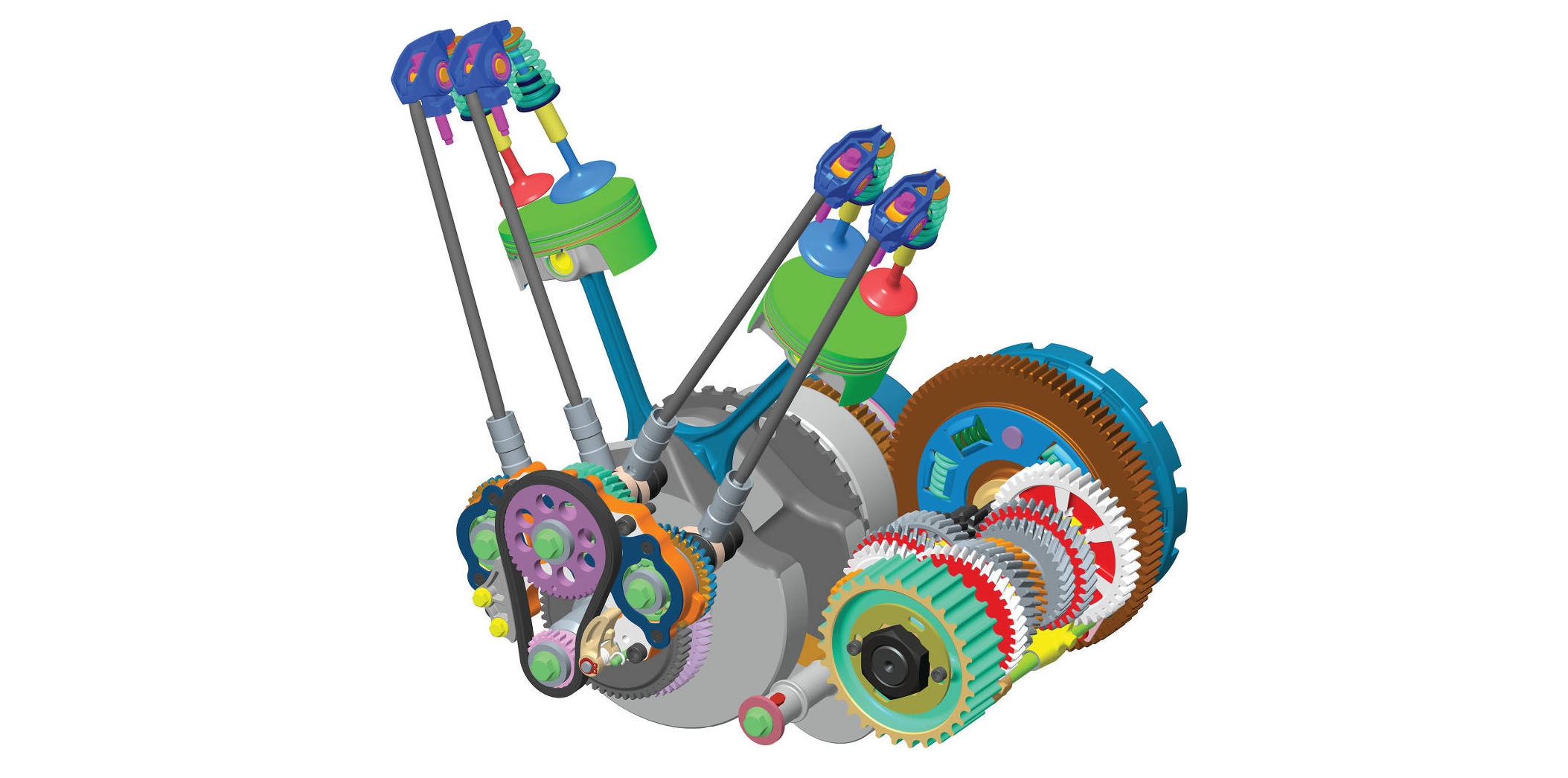
Tech Guide – we take a look at bore and stroke. Bore vs. Stroke. When engine designers spec up a new engine, there are thousands of different parameters that have to be considered. But after the essentials (engine capacity, number of cylinders, induction method), few are as fundamental as bore and stroke. Combined, the bore and stroke create the engine capacity but the different ways in which the desired capacity can be created are almost endless. For instance, an enormous bore could be coupled with a very short stroke, or a small bore could be coupled with a long stroke. So which is best? Choosing the wrong option can have a big effect on engine efficiency, which is why engine designers are so careful with their choices.
Big Bore
As an aftermarket modification, increasing the bore size is the best way to create additional engine capacity. It certainly won’t be cheap; increasing the bore will necessitate new pistons and a complete engine rebuild, but an increase in engine capacity will allow for bigger power gains. Compare this to increasing the stroke, where you’d be looking at a new crank, rods and maybe even a new head and pistons, the investment for an increased bore starts looking quite small.
However, when the engine’s in the design phase and neither the bore or stroke have been defined, there’s a whole lot more to consider. Increasing the bore size gives you a bigger piston crown surface area, good for creating additional force (torque) during combustion. However, the increase in surface area also means it’s easier for heat to be conducted out of the cylinder chamber – bad for efficiency.
The increased bore diameter also means the fuel/flame has further to travel to reach the edges of the cylinder, which again is bad for efficiency as it increases flame duration. Flame duration is important, as in an ideal world, the fuel would instantaneously combust and release all its energy at the optimal time in the engine’s stroke, maximising the energy that can be absorbed in the form of torque. As it is, the fuel takes time to fully combust, which means energy is released at times within the engine’s cycle that are less than ideal, reducing the overall efficiency of the system.
Stroke
For stroke, there’s only really one major design factor that needs to be considered: piston speed. By using a larger stroke to increase an engine’s capacity, the piston has further to travel during one engine cycle. If the piston has further to travel, but is still expected to operate within the same engine speeds (rpm), it has to travel faster.
Although designers do everything to reduce frictional forces between cylinders and cylinder bores, they can never be fully eliminated. With a piston travelling at high speeds over an increased distance, losses due to friction increase. This energy is lost in the form of heat, reducing engine efficiency. It also increases wear on the piston rings and cylinder bore, which is bad for reliability. Because of this, most engines will be designed with a limit in mind for the piston speed depending on the expected life of the engine.
The Compromise
Most road cars will utilise a bore diameter that’s very similar to the stroke length, which is called a ‘near square’ engine. This offers a good balance of minimising piston speed whilst also reducing thermal losses.
For high performance engines running at high rpms the obvious solution is to go with a short stroke and big bore. This is the design tactic taken with Formula One engines, which run a very short stroke compared to bore size. BMW took a similar approach with the design of the S85 V10, which utilised a bore of 92mm and a stroke of just 75.2 – a 22% difference. This type of engine is referred to as ‘over square’.
Finally, we have engines where the stroke is considerably longer than the bore diameter – an ‘under square’ engine. This type of engine isn’t typically used on the road, but for marine applications it’s widely used. Marine engines operate at very low rpms, so the increased stroke isn’t really a problem and narrowing down the bore size allows the designers to reduce the thermal losses from the engine. This, in part, is why marine engines are more efficient than road engines.





